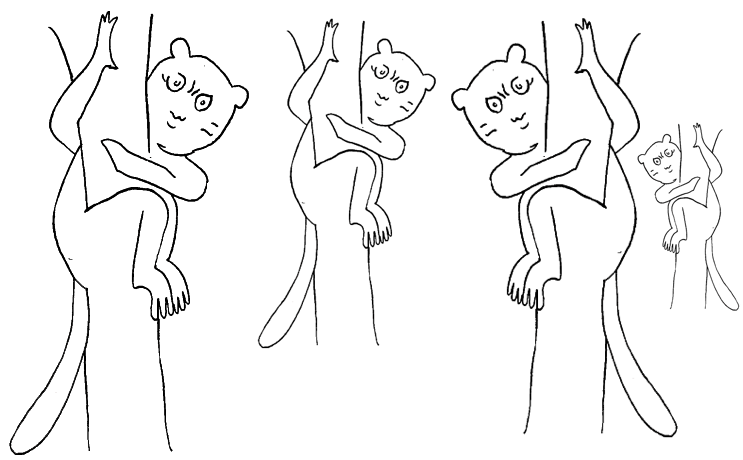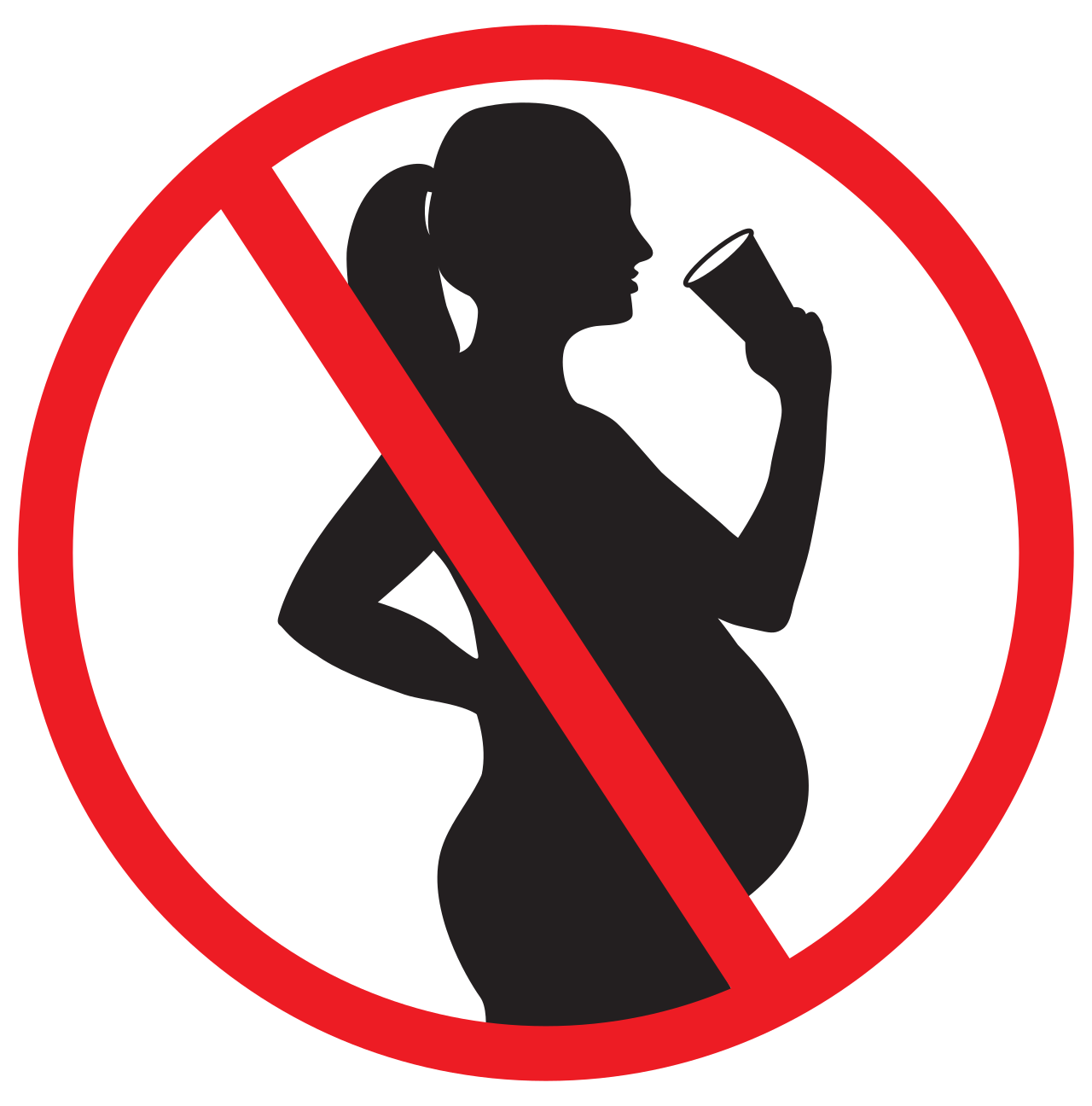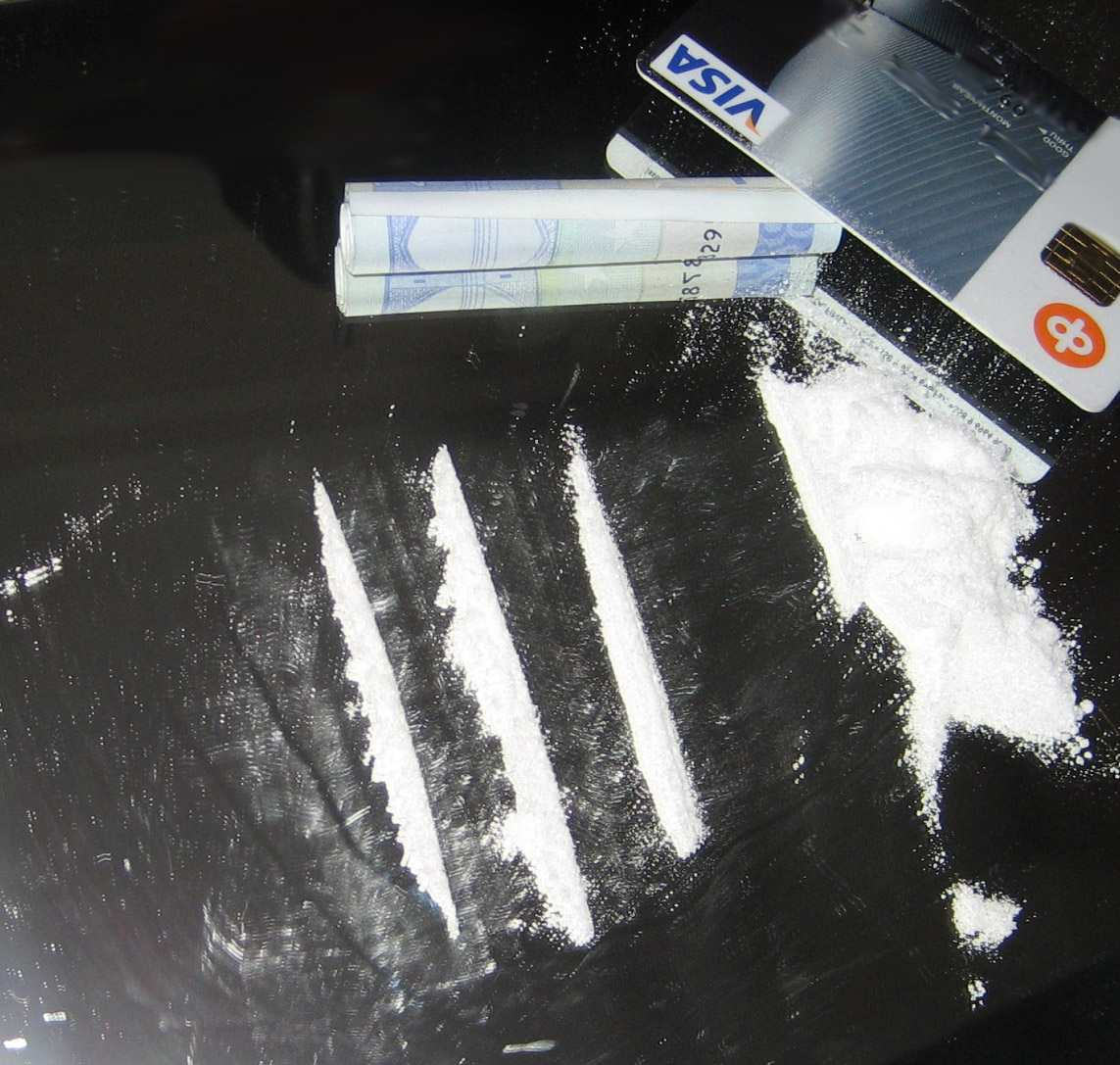
責任のある薬物の使用
Responsible drug use

☆ 責任ある薬物の使用(Responsible drug use)とは、向精神薬の使用に伴う利益を最大限に引き出し、リスクを最小限に抑えることを目指すものである。処方薬の規制薬物を転用 したもの ではない違法な向精神薬については、一部の批評家[1][2]は、薬物の強度や純度、依存症や感染症、その他の副作用のリスクが予測不能で監視されていな いため、違法な娯楽薬物の使用は本質的に無責任であると主張している。 しかし、ハームリダクションの提唱者たちは、アルコールの使用に適用される一般的な原則を適用することで、使用者は責任ある行動を取ることができると主張 している。すなわち、危険な状況、過剰摂取、薬物の有害な組み合わせを避けること、注射を避けること、また、薬物を摂取した状態で、酔っていないと安全で はない活動を行わないことである。[3] 薬物の使用は、潜在的に有益であると同時に潜在的に危険な活動であると考えられる。スカイダイビングや登山などの危険な活動と同様に、薬物使用に伴うさま ざまなリスクは、教育、注意、常識などのハームリダクション戦略を用いることで最小限に抑えることができる。また、これらの擁護者たちは、政府の行動(ま たは不作為)が、禁止によって純度や強度が明らかになっている薬物を入手不可能にするなど、人為的にリスクを増大させることで、責任ある薬物使用をより困 難にしていると指摘している。
| Responsible
drug use
seeks to maximize the benefits and minimize the risks associated with
psychoactive drug use. For illegal psychoactive drugs that are not
diverted prescription controlled substances, some critics[1][2] believe
that illegal recreational drug use is inherently irresponsible, due to
the unpredictable and unmonitored strength and purity of the drugs and
the risks of addiction, infection, and other side effects. Nevertheless, harm reduction advocates claim that the user can be responsible by employing the same general principles applicable to the use of alcohol: avoiding hazardous situations, excessive doses, and hazardous combinations of drugs; avoiding injection; and not using drugs at the same time as activities that may be unsafe without a sober state.[3] Drug use can be thought of as an activity that is potentially beneficial but also potentially risky. Similar to other risky activities such as skydiving or mountain climbing, the varied risks of drug use can be minimized by using harm-reduction strategies such as education, caution, and common sense. These advocates also point out that government action (or inaction) makes responsible drug use more difficult by artificially increasing risks, such as by making drugs of known purity and strength unavailable due to prohibition. |
責任ある薬物の使用とは、向精神薬の使用に伴う利益を最大限に引き出
し、
リスクを最小限に抑えることを目指すものである。処方薬の規制薬物を転用したものではない違法な向精神薬については、一部の批評家[1][2]は、薬物の
強度や純度、依存症や感染症、その他の副作用のリスクが予測不能で監視されていないため、違法な娯楽薬物の使用は本質的に無責任であると主張している。 しかし、ハームリダクションの提唱者たちは、アルコールの使用に適用 される一般的な原則を適用することで、使用者は責任ある行動を取ることができると主張 している。すなわち、危険な状況、過剰摂取、薬物の有害な組み合わせを避けること、注射を避けること、また、薬物を摂取した状態で、酔っていないと安全で はない活動を行わないことである。[3] 薬物の使用は、潜在的に有益であると同時に潜在的に危険な活動であると考えられる。スカイダイビングや登山などの危険な活動と同様に、薬物使用に伴うさま ざまなリスクは、教育、注意、常識などのハームリダクション戦略を用いることで最小限に抑えることができる。また、これらの擁護者たちは、政府の行動(ま たは不作為)が、禁止によって純度や強度が明らかになっている薬物を入手不可能にするなど、人為的にリスクを増大させることで、責任ある薬物使用をより困 難にしていると指摘している。 |
Harm reduction A label on alcoholic drinks promoting zero alcohol during pregnancy  Contaminated currency such as banknotes frequently used for snorting should be avoided as they may spread hepatitis C[4] Responsible drug use is emphasized as a primary prevention technique in harm-reduction drug policies. Harm-reduction policies were popularized in the late 1980s although they began in the 1970s counter-culture where cartoons were distributed to users explaining responsible drug use and consequences of irresponsible drug use.[5] Harm reduction as applied to drug use began as a philosophy in the 1980s aiming to minimize HIV transmission between intravenous drug users. It also focused on condom usage to prevent the transmission of HIV through sexual contact. Harm reduction worked so effectively that researchers and community policy makers adapted the theory to other diseases to which drug users were susceptible, such as Hepatitis C. Professor Graham Foster, of St Mary's Hospital, London, said: "Sharing banknotes or straws is a significant risk factor that people need to be more aware of. Although the risk of contracting hepatitis C through snorting is lower than through sharing a needle, it is still there."[4] Harm reduction seeks to minimize the harms that can occur through the use of various drugs, whether legal (e.g. ethanol (alcohol), caffeine and nicotine), or illegal (e.g. heroin and cocaine). For example, people who inject drugs can minimize harm to both themselves and members of the community through proper injecting technique, using new sterile needles and syringes each time, utilizing sterile water, employing sterile micron filters to purify solutions, using antiseptic pads to prepare injection sites and clean drug mixing vials/containers, testing for contaminants, and through proper disposal of all injecting equipment. Other harm reduction methods have been implemented with drugs such as crack cocaine. In some cities, peer health advocates (Weeks, 2006) have participated in passing out clean crack pipe mouthpiece tips to minimize the risk of Hepatitis A, B and C and HIV due to sharing pipes while lips and mouth contain open sores. Also, a study by Bonkovsky and Mehta reported that, just like shared needles, the sharing of straws used to "snort" cocaine can spread blood diseases such as Hepatitis C. The responsible user therefore acts to minimize the spread of blood-borne viruses such as hepatitis C and HIV in the wider community and reduce their own risk exposure to drug-related harms. |
ハームリダクション 妊娠中の飲酒ゼロを推進するアルコール飲料のラベル  C型肝炎を広める可能性があるため、鼻から吸引して使用されることが多い汚染された紙幣などの通貨は避けるべきである[4]。 責任ある薬物使用は、ハームリダクション薬物政策における主な予防策として強調されている。 ハームリダクション政策は1980年代後半に広まったが、1970年代のカウンターカルチャーで、薬物の責任ある使用と無責任な使用の結果について説明し た漫画が使用者たちに配布されたのが始まりである[5] 薬物使用におけるハームリダクションは、1980年代に、静脈注射薬物使用者間のHIV感染を最小限に抑えることを目的とした理念として始まった。また、 性的接触によるHIV感染を防ぐためのコンドーム使用にも重点が置かれた。ハームリダクションは非常に効果的であったため、研究者や地域政策立案者は、C 型肝炎など薬物使用者が感染しやすい他の病気にもその理論を応用した。 ロンドンのセントメアリー病院のグラハム・フォスター教授は、「紙幣やストローの共有は、人々がもっと注意を払うべき重大な危険因子である。 鼻から吸引することによるC型肝炎感染のリスクは、注射針の共有による感染よりも低いとはいえ、依然として存在する」と述べている。[4] ハームリダクションは、合法(例:エタノール(アルコール)、カフェイン、ニコチン)または非合法(例:ヘロイン、コカイン)を問わず、さまざまな薬物の 使用によって生じる害を最小限に抑えることを目指している。例えば、薬物を注射する人々は、適切な注射技術、毎回新しい滅菌済み針と注射器を使用するこ と、滅菌水を利用すること、滅菌済みのミクロンフィルターで溶液を浄化すること、消毒パッドで注射部位を準備し、薬液を混ぜるバイアル/容器を清潔に保つ こと、汚染物質の検査、そして注射器具の適切な廃棄などを通じて、自分自身と地域社会のメンバーの両方に及ぶ被害を最小限に抑えることができる。 クラック・コカインなどの薬物に対しては、他のハームリダクションの方法も実施されている。一部の都市では、ピア・ヘルス・アドボケイト(Weeks, 2006)が、口唇や口内にヘルペスなどの開放性潰瘍がある人がパイプを共有することによるA型、B型、C型肝炎およびHIVのリスクを最小限に抑えるた め、清潔なクラックパイプの吸い口を配布する活動に参加している。また、BonkovskyとMehtaによる研究では、注射針の共用と同様に、コカイン を「鼻から吸引」する際に使用するストローを共用することで、C型肝炎などの血液感染症が蔓延する可能性があると報告されている。 そのため、責任あるユーザーは、C型肝炎やHIVなどの血液媒介ウイルスの蔓延を地域社会全体で最小限に抑え、薬物関連の害から身を守るために、自らリス クを減らす行動を取っている。 |
| Supervised injection sites (SiS) Main article: Supervised injection site The provision of supervised injection sites, also referred to as safe injection sites, operates under the premise of harm reduction by providing the injection drug user with a clean space and clean materials such as needles, sterile water, alcohol swabs, and other items used for safe injection. Vancouver, British Columbia[6] opened a SiS called Insite in its poorest neighbourhood, the Downtown Eastside. Insite was opened in 2003 and has dramatically reduced many harms associated with injection drug use. The research arm of the site,[6] run by The Centre of Excellence for HIV/AIDS has found that SiS leads to increases in people entering detox and addiction treatment without increasing drug-related crime. As well, it reduces the littering of drug paraphernalia (e.g., used needles) on the street and reduces the number of people injecting in public areas. The program is attracting the highest-risk users, which has led to less needle-sharing in the Downtown Eastside community, and in the 453 overdoses which occurred at the facility, health care staff have saved every person. Since the drug policy of the Netherlands considers substance use a social and health-related issue and not a legal one, the government has opened clinics where drug users may consume their substances in a safe, clean environment. Users are given access to clean needles and other paraphernalia, monitored by health officials and are given the ability to seek help from drug addiction.[7] Due to the project's initial success in reducing mortality ratios and viral spread amongst injection drug users, other projects have been started in Switzerland, Germany, Spain, Australia, Canada and Norway. France, Denmark and Portugal also opened multiple drug consumption facilities.[8][9][10] |
管理下注射施設(SiS) 詳細は「管理下注射施設」を参照 管理下注射施設は、安全注射施設とも呼ばれ、注射薬物使用者に清潔な空間と注射針、滅菌水、アルコール綿、安全な注射に使用するその他の物品などの清潔な 器具を提供することで、ハームリダクションの前提に基づいて運営されている。 ブリティッシュコロンビア州バンクーバー市は、同市で最も貧しい地区であるイーストサイド・ダウンタウンに、インサイトと呼ばれるSiSを開設した。イン サイトは2003年に開設され、注射薬物使用に伴う多くの弊害を劇的に減少させた。HIV/AIDS研究センターが運営するこの施設の研究部門は、薬物関 連犯罪を増加させることなく、SiSが解毒や中毒治療を受ける人の増加につながっていることを発見した。また、薬物関連の犯罪を増加させることなく、薬物 常習者の解毒や中毒治療への参加を促すことも分かっている。さらに、薬物関連器具(使用済みの注射針など)の路上へのポイ捨ても減り、公共の場での注射行 為も減少した。このプログラムは最も危険性の高い薬物常習者を惹きつけ、ダウンタウン・イーストサイドのコミュニティでは注射針の共用が減り、施設で発生 した453件の過剰摂取では、医療スタッフが全員を救った。 オランダの薬物政策は薬物の使用を社会問題および健康問題とみなし、法的な問題とはみなさないため、政府は薬物使用者が安全で清潔な環境で薬物を摂取でき る診療所を開設した。利用者は清潔な注射針やその他の器具を使用でき、保健当局の監視下に置かれる。また、薬物依存症の治療を受けることもできる。 このプロジェクトは、注射薬物使用者の死亡率とウイルス感染率の低下という当初の成功により、スイス、ドイツ、スペイン、オーストラリア、カナダ、ノル ウェーでも同様のプロジェクトが開始された。フランス、デンマーク、ポルトガルでも、複数の薬物消費施設が開設された。[8][9][10] |
| Principles Duncan and Gold argue that to use controlled and other drugs responsibly, a person must adhere to a list of principles.[11] They and others[12] argue that drug users ought to proceed by: understanding and educating oneself on the effects, risks, side effects and legal status of the drug they are taking[12] measuring accurate dosages, and take other precautions to reduce the risk of overdose when taking drugs where an overdose is possible if possible, drug checking all substances before use to determine their purity and strength attempting to gain the most pure and high-quality drugs laced with no cutting agent at best[13] such as by buying on darknet markets[14][15] using drugs only in relaxed and responsible social situations as altered consciousness can be inappropriate in potentially dangerous or unknown settings avoiding driving, operating heavy machinery, or otherwise situate themselves directly or indirectly responsible for the safety or care of another person while intoxicated and discouraging persons from operating a motor vehicle while intoxicated having a trip sitter (or "copilot") when taking hallucinogenic drugs taking a small dose first when taking a new drug ("start low and go slow")[16] taking the smallest dose of a recreational drug that will produce the desired effects using recreational drugs in moderation,[17] setting reasonable limits on the consumption and not allowing drug use to overshadow other aspects of their life (i.e. financial and social responsibilities) avoiding mixing or combining drugs, especially unknown drugs and drugs with known dangerous interactions not trusting someone else with the responsibility for your health and safety knowing basic first-aid techniques and taking responsibility for applying them appropriately in cases of drug emergencies avoiding the injection of drugs; if injection cannot be avoided, then by using proper supplies like sterile needles, micron filters, and sterile water recognizing that one's own drug-taking behavior and attitudes in the presence of others will influence others, especially children[18] abstaining from drug use when inappropriate for reasons of health and physical fitness such as during pregnancy respecting an individual's decision concerning drug use providing alternatives of acceptable social-recreational behaviors within a group for others and avoiding drug use to become the only motivation or focus of the social situation understanding the individuality of response[12] being aware of the complex influences of set and setting on psychoactive drug experiences and acting accordingly Some proposed ethical guidelines include: never tricking or trying to persuade anyone to use a drug being morally conscious of the source of the drugs that a person is using Duncan and Gold suggested that responsible drug use involves three areas of responsibility: Situation: concerns over the possible situations in which drugs might be used legally, such as the avoidance of hazardous situations; not using when alone; nor using due to coercion or when the use of drugs itself is the sole reason for use. Health: the avoidance of excessive doses or hazardous combinations of drugs; awareness of possible health consequences of drug use; avoiding drug-using behaviors that can potentially lead to addiction; and not using a drug recreationally during periods of excessive stress. Safety: using the smallest dose necessary to achieve the desired effects; using only in relaxed settings with supportive companions; avoiding the use of drugs by injection; and not using drugs while performing complex tasks or those where the drug might impair one's ability to function safely. |
原則 ダンカンとゴールドは、規制薬物やその他の薬物を責任を持って使用するには、人格が一定の原則を守らなければならないと主張している。[11] 彼らや他の人々は、薬物使用者は以下を順守すべきだと主張している。 摂取している薬物の効果、リスク、副作用、法的地位について理解し、自ら教育すること[12] 正確な用量を測定し、過剰摂取の可能性がある薬物を摂取する際には、過剰摂取のリスクを軽減するためのその他の予防措置を講じること 可能であれば、使用前にすべての物質を検査し、純度と強度を確認する できる限り、混ぜ物や添加物のない、最も純粋で高品質な薬物を入手するよう試みる。例えば、ダークネット市場で購入するなどする[14][15] 意識の変化は、潜在的に危険な状況や未知の状況では不適切となる可能性があるため、薬物はリラックスした責任ある社会的状況でのみ使用する 飲酒運転や重機の操作を避ける、または、酩酊状態にある間は、直接的または間接的に他者の安全やケアに責任を負う立場に身を置かないこと、また、飲酒運転 をしないよう周囲の人々に促すこと 幻覚剤を摂取する際には、付き添い人(または「副操縦士」)を置くこと 新しい薬物を摂取する際には、少量から摂取すること(「少量から始めて徐々に増やす」)[16] 娯楽用ドラッグを摂取する際には、望む効果をもたらす最小限の量にすること 娯楽用ドラッグを節度を持って使用する[17]、使用量に妥当な制限を設け、ドラッグ使用が生活の他の側面(金銭面や社会的な責任など)に影を落とさない ようにする 複数のドラッグを混合したり組み合わせたりしない、特に未知のドラッグと危険な相互作用が知られているドラッグを混合したり組み合わせたりしない 自分の保健と安全に対する責任を他人に委ねない 基本的な応急処置の方法を理解し、薬物による緊急事態が発生した場合には適切に処置する責任を負う 薬物の注射を避ける。注射が避けられない場合は、滅菌針、ミクロンフィルター、滅菌水などの適切な器具を使用する 他者の前での薬物の摂取行動や態度は、特に子供たちに影響を与えることを認識する[18] 妊娠中など、健康や体調に不適切な場合は薬物の使用を控える 薬物使用に関する個人の決定を尊重する グループ内の他の人々に対して、社会的な娯楽行動の代替案を提供し、薬物使用が唯一の動機や社会状況の焦点とならないようにする 反応の個別性を理解する[12] 向精神薬の使用体験に対するセットとセッティングの複雑な影響を認識し、それに応じて行動する 倫理指針として提案されているものには以下のようなものがある。 薬物使用を騙したり、説得しようとしたりしないこと 使用する薬物の入手先について道徳的な意識を持つこと ダンカンとゴールドは、責任ある薬物使用には次の3つの責任領域が含まれると提案している。 状況:薬物が合法的に使用される可能性のある状況について懸念すること。例えば、危険な状況を回避すること、一人きりの時には使用しないこと、強制による 使用や薬物使用自体が唯一の理由による使用はしないことなど。 保健:薬物の過剰摂取や有害な組み合わせを避けること、薬物使用による健康への影響を認識すること、依存症につながる可能性のある薬物使用を避けること、 過剰なストレス下にある期間は娯楽目的で薬物を使用しないこと。 安全:望ましい効果を得るために必要な最小限の用量を使用すること、支援してくれる仲間がいるリラックスした状況でのみ使用すること、注射による薬物の使 用を避けること、複雑な作業や薬物の使用により安全な機能能力が損なわれる可能性がある作業中は薬物を使用しないこと。 |
| Criticism and counterarguments Health and social consequences Drug use and users are often not considered socially acceptable; they are often marginalized socially and economically.[19] Drug use may affect work performance; however, drug testing should not be necessary if this is so, as a user's work performance would be observably deficient, and be grounds in itself for dismissal. In the case of discriminate use of amphetamines, substituted amphetamines and other stimulants, work capacity actually increases, which in itself raises additional ethical considerations.[20][21] Illegality Illegality causes supply problems, and artificially raises prices far above the production and transportation costs. Purity and potency of many drugs is difficult to assess, as the drugs are illegal. Unscrupulous and unregulated middlemen are drawn by profit into the industry of these valuable commodities, directly affecting the users ability to obtain and use the drugs safely and forcing the user to take avoidable risks. Drug dosaging with varying purity is problematic. Profit motivation rewards illegal sellers who dilute substances with a cutting agent; when a user, expecting a low dose, procures "uncut" drugs, an overdose can result. The morality of buying certain illegal drugs is also questioned given that the trade in cocaine, for instance, has been estimated to cause 20,000 deaths a year in Colombia alone.[22][needs update?] Increasing Western demand for cocaine causes several hundred thousand people to be displaced from their homes every year, indigenous people are enslaved to produce cocaine and people are killed by the land mines drug cartels place to protect their coca crops.[22] However, the majority of deaths currently caused by the illegal drug trade can only take place in a situation in which the drugs are illegal and some critics blame prohibition of drugs and not their consumption for the violence surrounding them.[23] The illegality of drugs in itself may also cause social and economic consequences for those using them, and legal regulation of drug production and distribution could alleviate these and other dangers of illegal drug use.[24] On festivals As drugs are very prevalent in festival culture more and more consider taking measures for responsible usage there.[25] Some music festival organizers have chosen to provide services meant to inform about responsible drug use and drug checking for the disposal of dangerously laced ones.[26][27][28] As a result, some have reported a significant reduction of the workload of festival's medics, welfare team and police officers.[26] |
批判と反論 保健および社会的な影響 薬物の使用および使用者は、社会的に容認されるとは考えられていないことが多く、社会的に、また経済的に疎外されることが多い。[19] 薬物の使用は仕事のパフォーマンスに影響を与える可能性があるが、もしそうであれば、使用者の仕事のパフォーマンスは明らかに劣るため、解雇の理由となる はずであり、薬物検査は必要ないはずである。アンフェタミン、アンフェタミン代替品、その他の刺激剤の差別的使用の場合、仕事の能力は実際に向上するが、 それ自体がさらなる倫理的考察を引き起こす。 違法性 違法性は供給上の問題を引き起こし、生産コストや輸送コストをはるかに上回る価格を人為的に引き上げる。多くの薬物の純度や効力は、その薬物が違法である がゆえに評価が難しい。不誠実で規制のない仲介業者が、利益を求めてこうした価値ある商品の業界に参入し、利用者が安全に薬物を入手し使用する能力に直接 影響を与え、利用者に回避可能なリスクを負わせている。純度の異なる薬物の投与量は問題である。利益を求める動機が、物質を希釈剤で薄める違法な販売者を 後押しする。低用量を期待して「カットされていない」薬物を入手したユーザーは、過剰摂取の危険にさらされる。 例えばコカインの取引は、コロンビアだけで年間2万人の死者を出していると推定されていることから、特定の違法薬物を購入することの道徳性も問われてい る。[22][更新が必要?] コカインに対する欧米の需要の高まりにより、毎年数十万人が家を追われ、先住民がコカインの製造のために奴隷のように働かされ、麻薬カルテルがコカの栽培 地を守るために仕掛けた地雷によって人が命を落としている 。しかし、違法薬物の取引によって引き起こされる死のほとんどは、薬物が違法である状況下でのみ起こりうるものであり、薬物の消費ではなく、薬物の禁止が その周辺の暴力の原因であると非難する批評家もいる。[23] 薬物の違法性自体が、それを使用する人々にとって社会や経済的な結果を引き起こす可能性があり、薬物の生産と流通の合法的な規制は、違法な薬物使用の危険 性を軽減することができる。[24] フェスティバルに関して 薬物はフェスティバル文化において非常に蔓延しているため、そこで責任ある使用のための対策を講じようという動きが強まっている。[25] いくつかの音楽フェスティバルの主催者は、責任ある薬物使用に関する情報を提供し、危険な混入薬物の廃棄のための薬物検査を行うサービスを提供することを 選択している。[26][27][28] その結果、フェスティバルの医療スタッフ、福祉チーム、警察官の業務量が大幅に減少したという報告もある。[26] |
| Organizations [icon] This section needs expansion. You can help by adding to it. (May 2017) Many organizations exist to promote responsible drug use and harm reduction throughout the world. Some, such as Students for Sensible Drug Policy or Drug Policy Alliance, are primarily activist groups concerned with drug policy reform, promoting scientific research on drugs, and opposing stigma and misinformation about drug use and drug users. Others exist primarily as drug testing services for drug users (e.g. Energy Control or DrugsData), or as supervised injection services (e.g. Insite), or as informational sources (e.g. Bluelight or Erowid). Governments have begun to address responsible drug use within their respective jurisdictions. The U.S. Department of Health and Human Services addresses harm reduction through the Substance Abuse and Mental Health Services Administration as a part of the department's Overdose Prevention Strategy.[29][30] Bluelight Erowid DanceSafe[31][32] Drug Policy Alliance[33] Harm Reduction International[34] Insite[35] Students for Sensible Drug Policy[36] |
組織 [icon] この節は拡張が必要である。 あなたはそれを追加することで手助けができる。 (2017年5月) 世界中で、責任ある薬物使用とハームリダクションを推進する多くの組織が存在する。 例えば、Students for Sensible Drug PolicyやDrug Policy Allianceなどの団体は、薬物政策の改革、薬物に関する科学的研究の推進、薬物使用や薬物使用者に対する偏見や誤った情報の反対を主な目的とする活 動家グループである。 その他の団体は、薬物使用者のための薬物検査サービス(例えば、Energy ControlやDrugsData)や、監督下での注射サービス(例えば、Insite)、情報源(例えば、BluelightやErowid)として 主に存在している。各国政府は、それぞれの管轄区域における薬物の責任ある使用について取り組み始めている。米国保健社会福祉省は、同省の過量服薬防止戦 略の一環として、薬物乱用・精神衛生管理庁を通じてハームリダクションに取り組んでいる。[29][30] ブルーライト Erowid ダンスセーフ[31][32] 薬物政策連合[33] ハームリダクション・インターナショナル[34] インサイト[35] 賢明な薬物政策を求める学生[36] |
| Cognitive liberty Counterfeit drug Drug checking Drug education Drug harmfulness Drug liberalization Drug policy reform Entheogen Harm reduction Psychonautics Reagent testing Straight edge |
認知的自由 偽造薬 薬物検査 薬物教育 薬物の有害性 薬物の自由化 薬物政策の改革 エンセオジェン ハームリダクション サイクロネイティクス 試薬検査 ストレート・エッジ |
| Zinberg,
N. E. (1984) Drug, Set, And Setting: The Basis for Controlled
Intoxicant Use (New Haven: Yale University Press) ISBN 0-300-03110-6 |
ジンバーグ、N. E. (1984)
『薬物、セット、そして環境:管理された薬物使用の基礎』(ニューヘイブン:イェール大学出版)ISBN 0-300-03110-6 |
| External links Fact sheets on responsible recreational drug use Towards a Culture of Responsible Psychoactive Drug Use Fundamentals of Responsible Psychoactive Use, Erowid Harm reduction The History of Harm Reduction SOM.NIT // Risk reduction associated with recreational drug consumption Harm Reduction & Drug info (and resources in Canada) Responsible drug use websites ConsumeResponsibly, Cannabis RollSafe, MDMA TripSafe, Psychedelics |
外部リンク 責任ある娯楽用薬物使用に関するファクトシート 責任ある向精神薬使用の文化に向けて 責任ある向精神薬使用の基礎、Erowid ハームリダクション ハームリダクションの歴史 SOM.NIT // 娯楽用薬物の消費に伴うリスクの低減 ハームリダクション&薬物情報(およびカナダのリソース 責任ある薬物使用に関するウェブサイト ConsumeResponsibly、大麻 RollSafe、MDMA TripSafe、幻覚剤 |
| https://en.wikipedia.org/wiki/Responsible_drug_use |
リンク(依存症と文明)
リ ンク(ドラッグ問題)
文 献
そ の他の情報
CC
Copyleft, CC, Mitzub'ixi Quq Chi'j, 1996-2099
☆
 ☆
☆